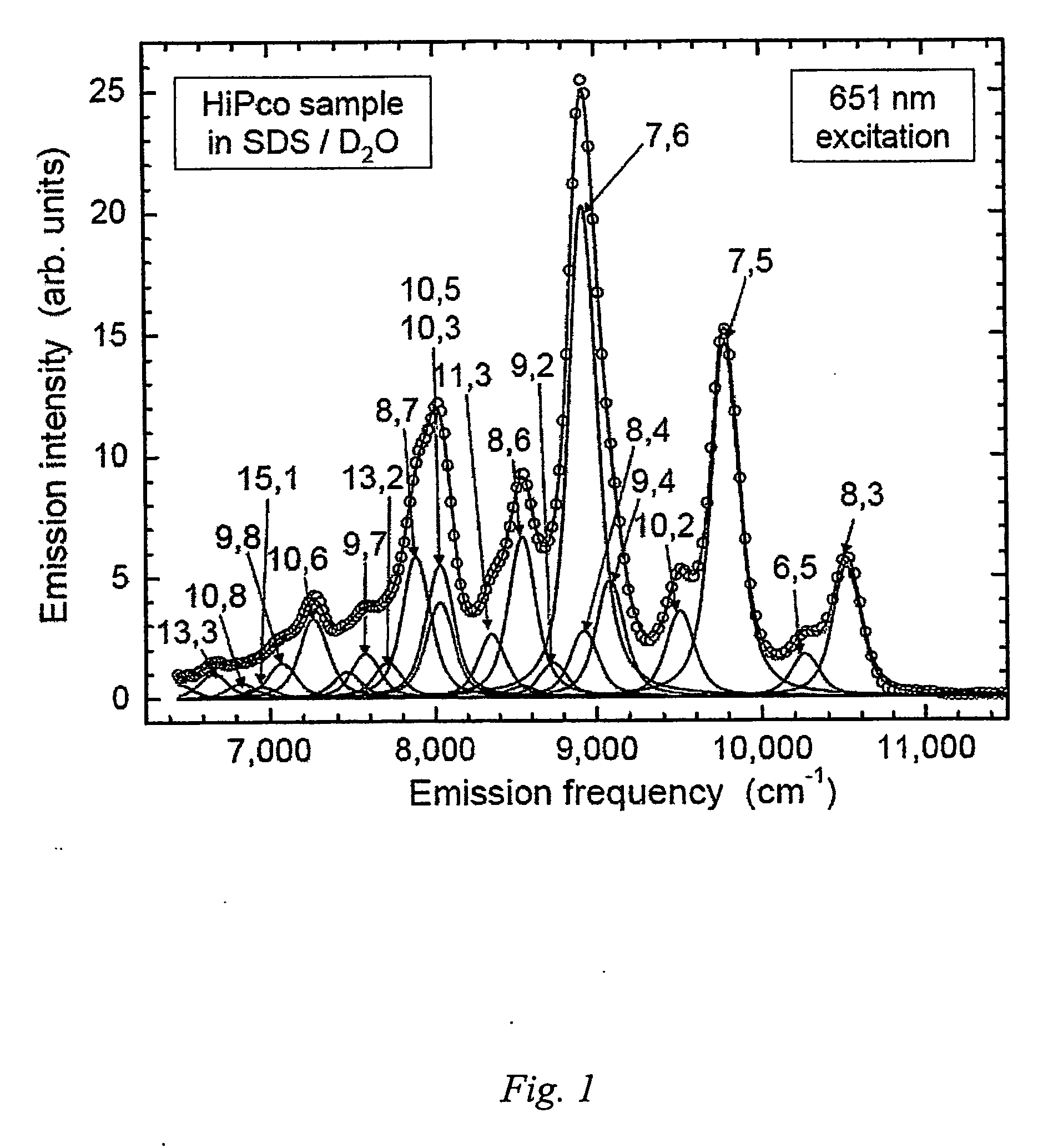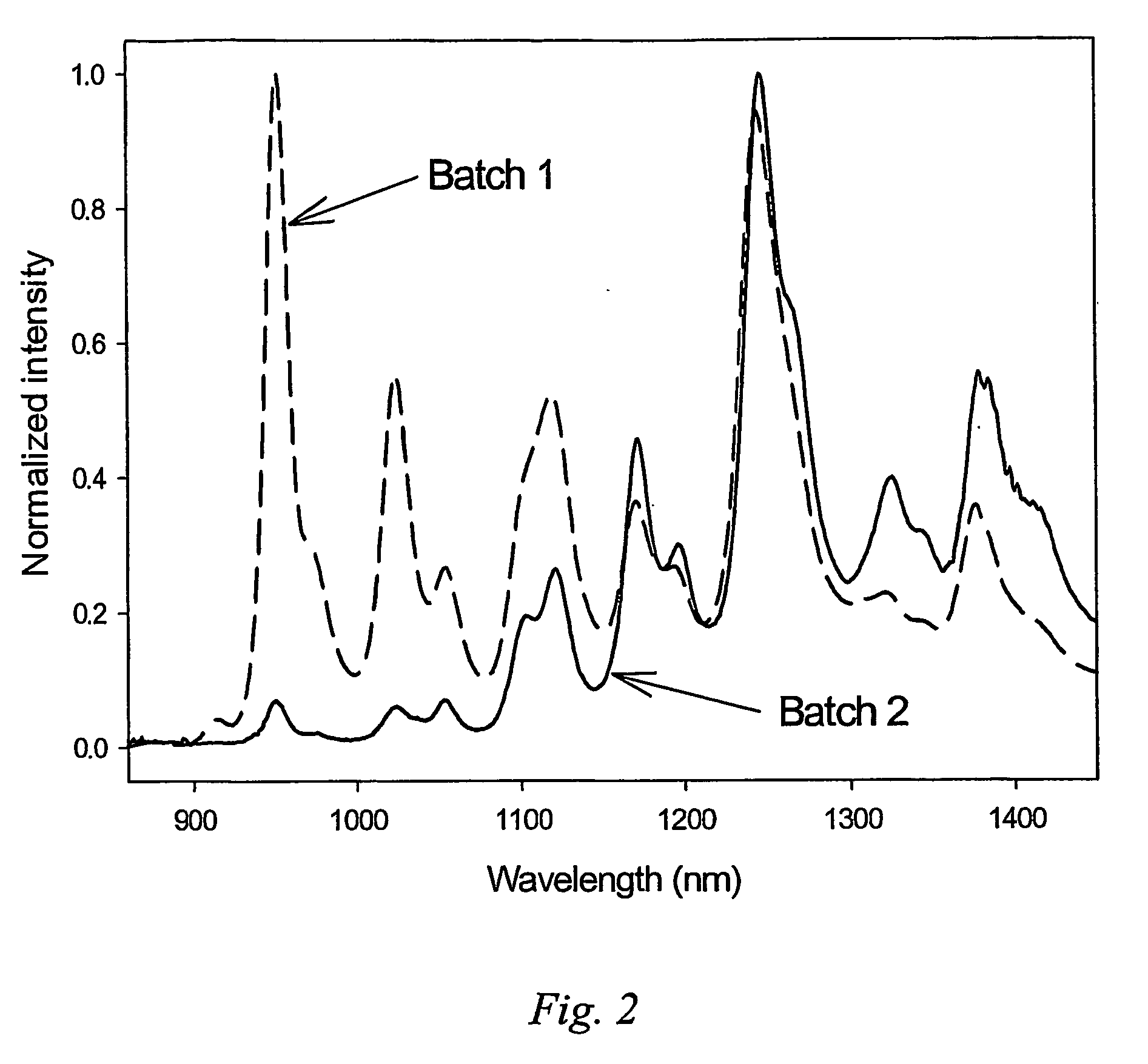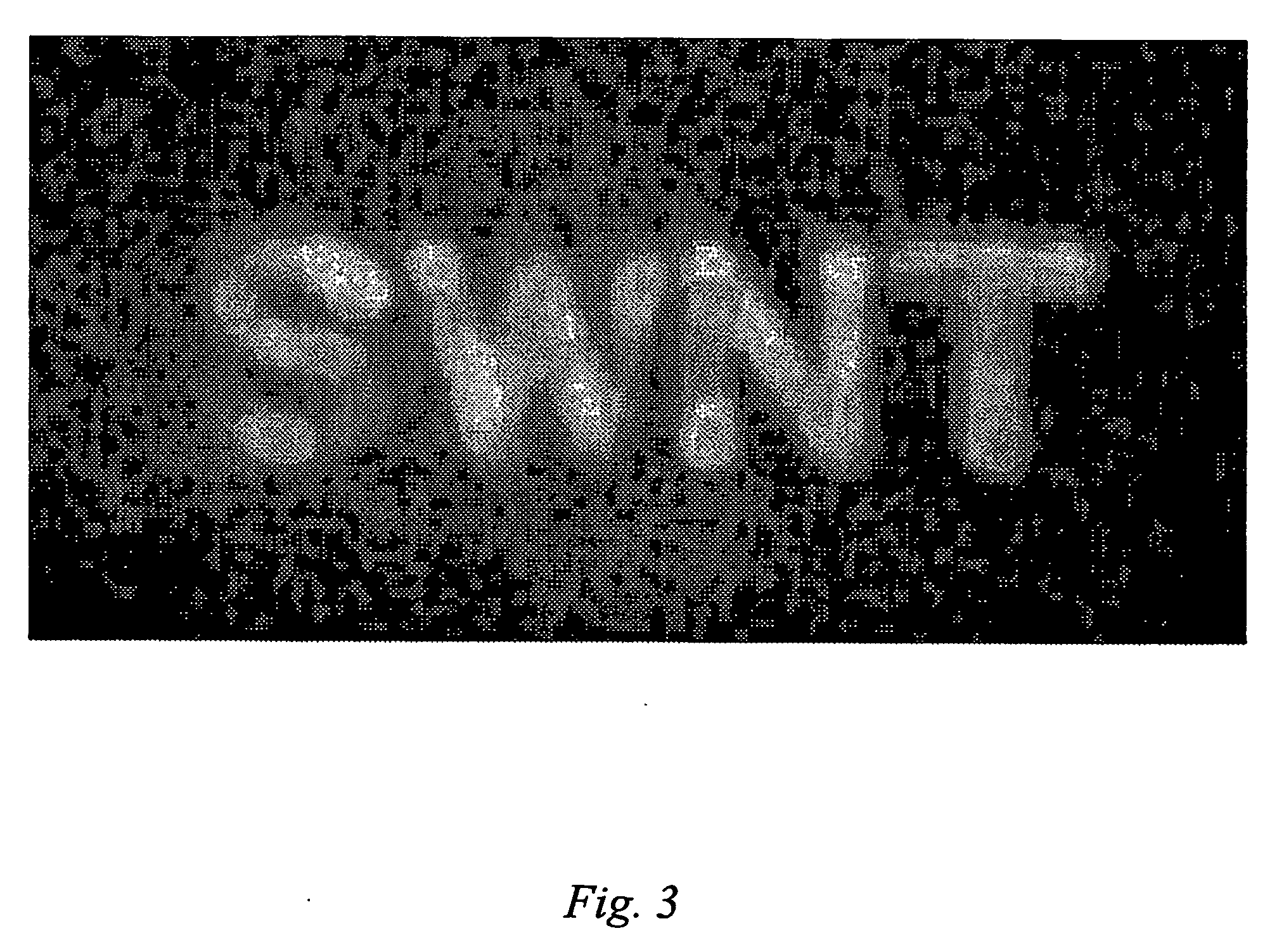Fluorescent security ink using carbon nanotubes
a technology of carbon nanotubes and fluorescence security, applied in the field of fluorescent inks and markers, can solve the problems of counterfeiting of consumer products and other articles of manufacturing, art galleries facing such challenges,
- Summary
- Abstract
- Description
- Claims
- Application Information
AI Technical Summary
Benefits of technology
Problems solved by technology
Method used
Image
Examples
example 1
[0068] This Example serves to illustrate a manner in which nanotube inks can be used according to some embodiments of the present invention.
[0069] SWNTs (HiPco, Rice University) were dispersed in an aqueous solution of SDS surfactant by an accepted process of high-shear mixing, ultrasonic agitation, and ultracentrifugation to create a nanotube ink.
[0070] The nanotube ink suspension was used to fill the reservoir of a flowing ink drafting pen, which was then used with a drafting template to write the characters “SWNT” onto a piece of office paper manufactured with a mild gloss coating. The ink was then allowed to dry such that the resulting characters were approximately 5 mm in height and with a mass per character of approximately 10 nanograms. Such a small amount of SWNTs renders the ink invisible to the naked eye.
[0071] Upon irradiation with monochromatic light of 671 nm wavelength, the letters were seen to fluoresce, emitting radiation in the NIR. This emission was detected wit...
example 2
[0072] This Example serves to illustrate how CNT fluorescent markers can be integrated into host materials like polymers.
[0073] SWNTs (HiPco, Rice University) were blended into a poly(methylmethacrylate) (PMMA) matrix by ultrasonic dispersion of SWNTs into a xylene solution of PMMA. Evaporation of the xylene gave an optically clear solid containing fluorescent SWNTs.
[0074]FIG. 4 is a fluorescence spectrum of these SWNT markers which have been integrated into the PMMA host, wherein excitation is at 669 nm from a diode laser. Each peak indicated by an arrow corresponds to fluorescence from a different SWNT species within the sample.
example 3
[0075] This Example serves to illustrate excitation selectively within a CNT sample comprising a variety of CNT species.
[0076] In the case of SWNTs, due to excitation selectivity, only a subset of SWNT types will be detectable with some “standard” excitation wavelength, such as 660 to 670 nm (the region where some common semiconductor diode lasers emit). Many nanotube types that might be present in the sample may be hidden or exhibit an emission intensity which is too low to be detected, especially where such peaks lie close to intense peaks activated with such “standard” excitation wavelengths. The application of additional excitation wavelengths can possibly reveal these typically “hidden” peaks (and the semiconducting SWNT species that produce them).
[0077]FIG. 5 depicts the fluorescence spectra of the same SWNT sample (HiPco, Rice University), taken with three different excitation wavelengths, wherein excitation wavelengths are as follows: trace a, 669 nm; trace b, 573 nm; and ...
PUM
| Property | Measurement | Unit |
|---|---|---|
| Diameter | aaaaa | aaaaa |
| Diameter | aaaaa | aaaaa |
| Length | aaaaa | aaaaa |
Abstract
Description
Claims
Application Information
 Login to View More
Login to View More - R&D
- Intellectual Property
- Life Sciences
- Materials
- Tech Scout
- Unparalleled Data Quality
- Higher Quality Content
- 60% Fewer Hallucinations
Browse by: Latest US Patents, China's latest patents, Technical Efficacy Thesaurus, Application Domain, Technology Topic, Popular Technical Reports.
© 2025 PatSnap. All rights reserved.Legal|Privacy policy|Modern Slavery Act Transparency Statement|Sitemap|About US| Contact US: help@patsnap.com



